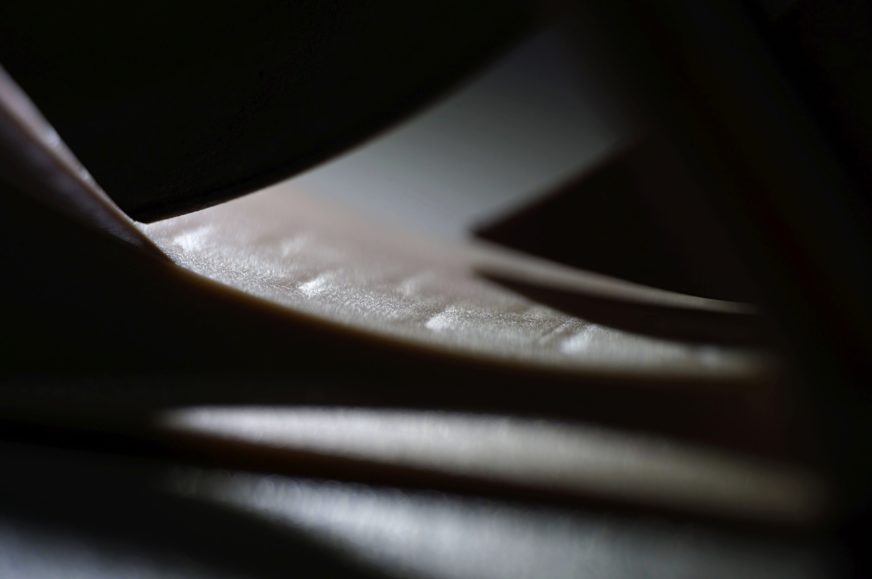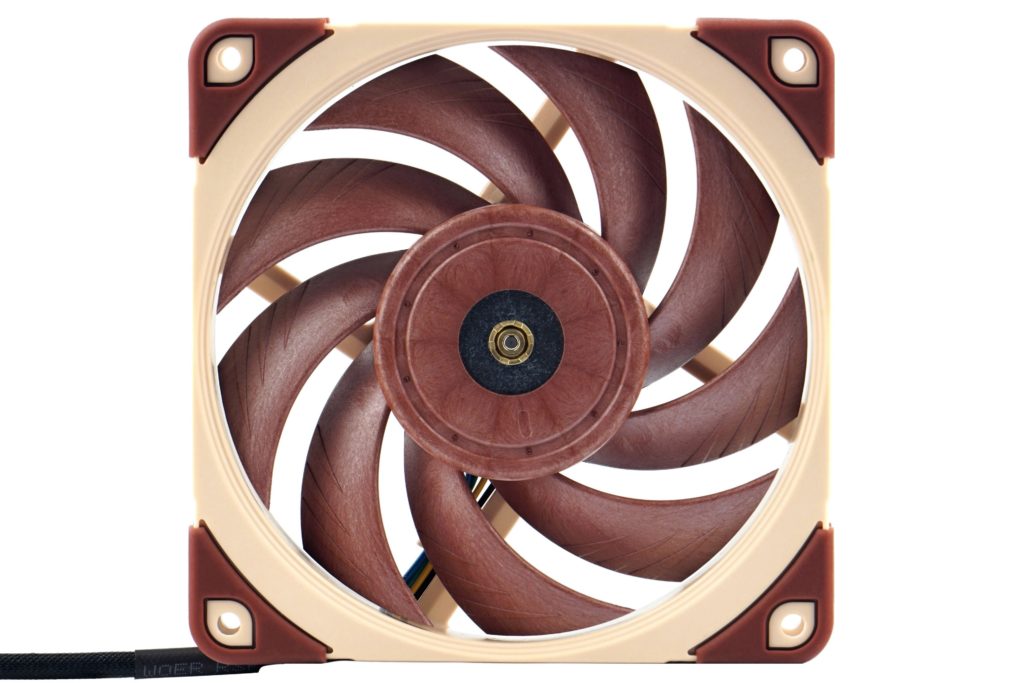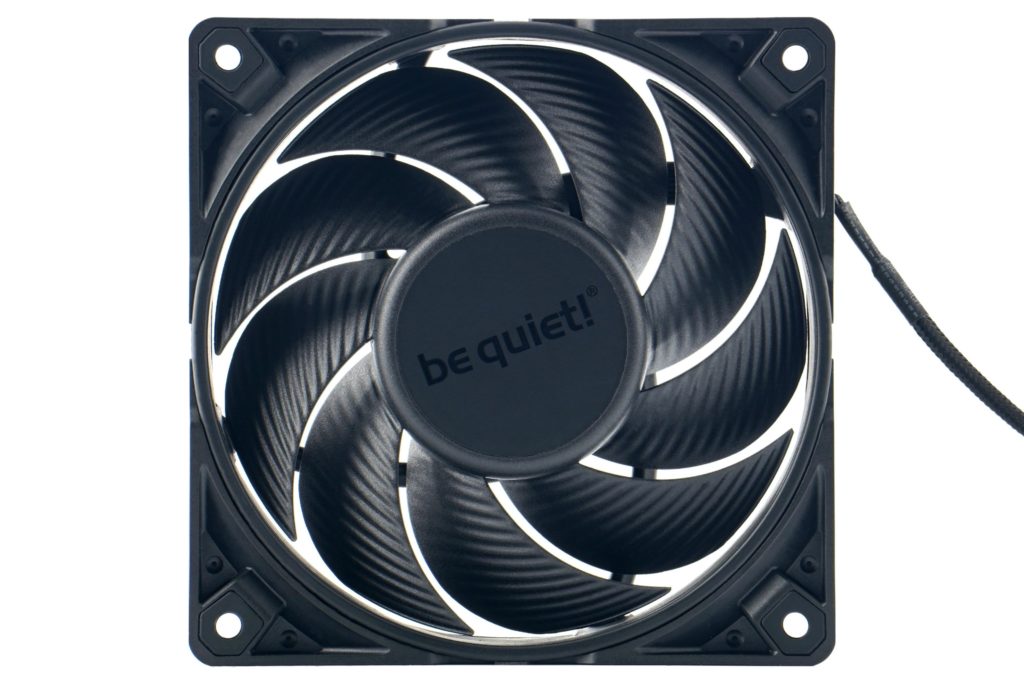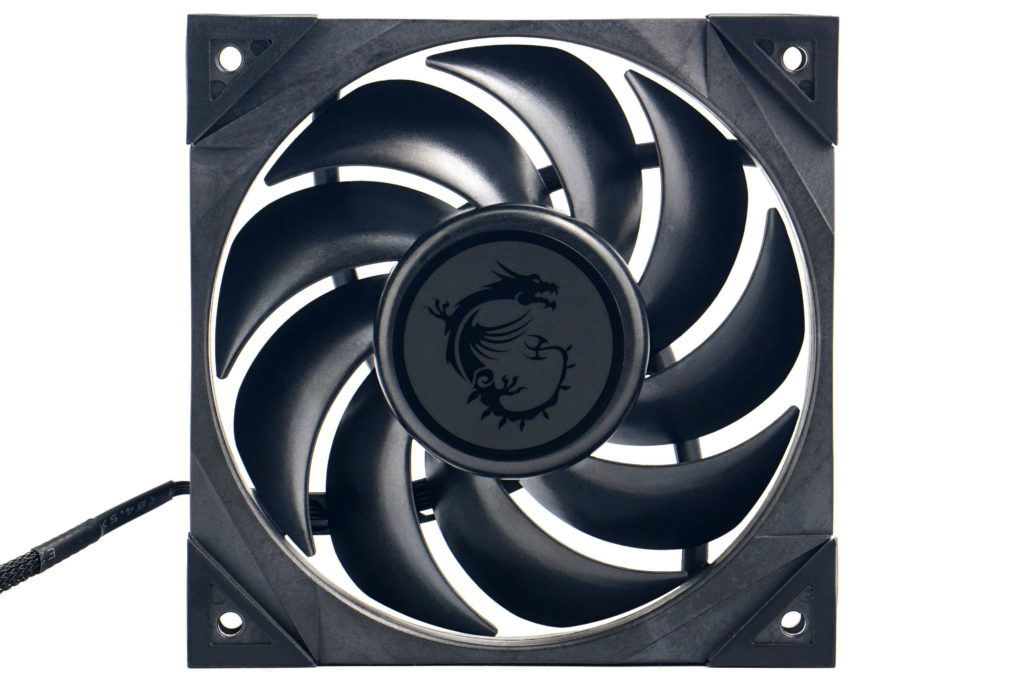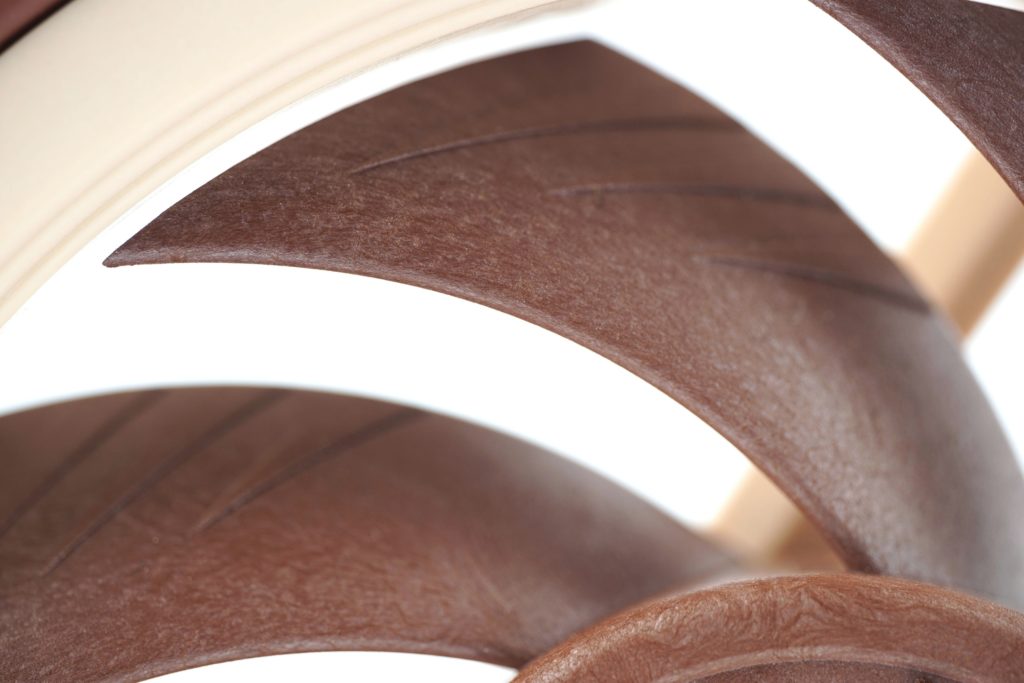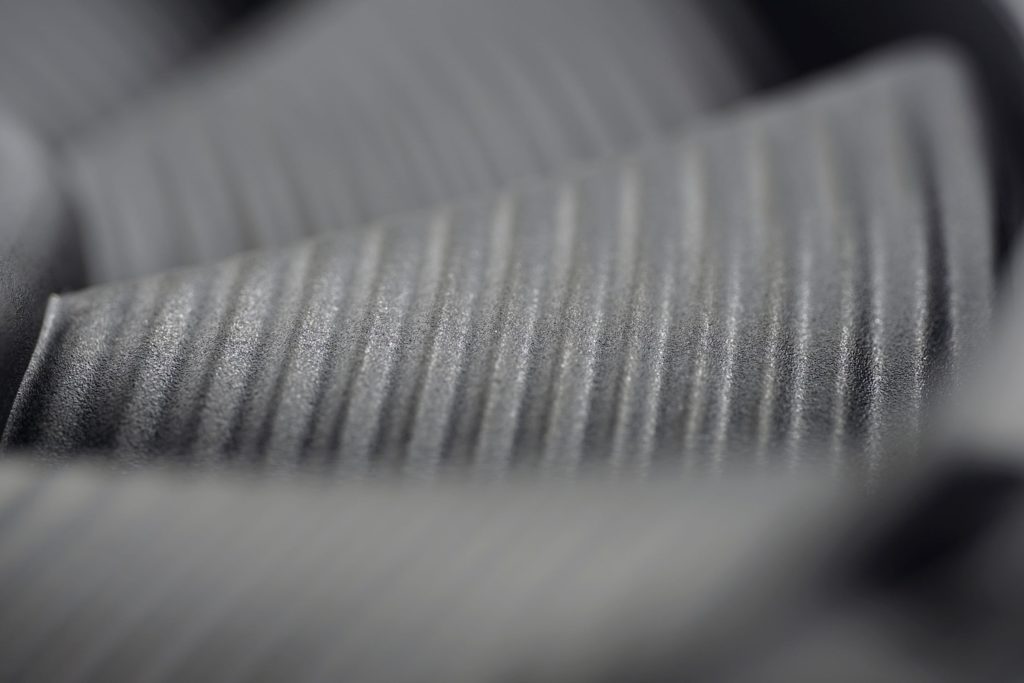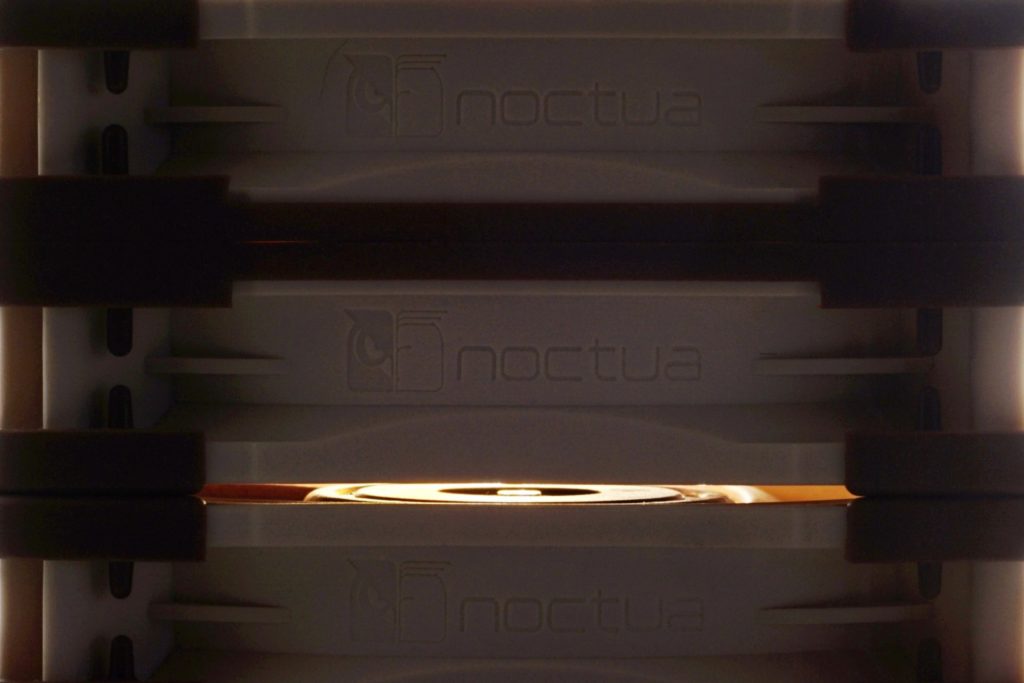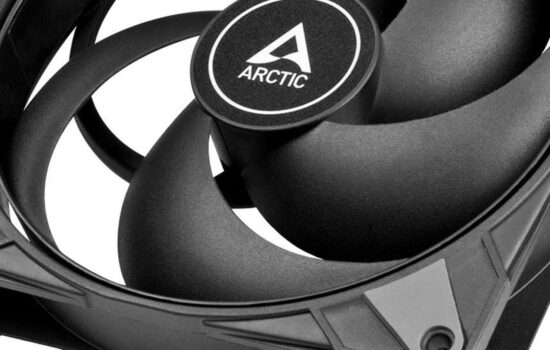Adjustments to the Noctua NF-A12x25 fan that would be worth considering
The Noctua NF-A12x25 fan may be the closest to perfection of the 120mm fans, but even the best things have their weaknesses. This will be no exception and there are elements of the NF-A12x25 that make sense to get into. And that this is true, Noctua will prove sooner or later in the next generation of 120 mm fans. But we’ll discuss the topic of what exactly to tweak, to do neater, right now..
Before we focus on the specific “gaps” where we see potential for improvement, one important point needs to be made. Nothing we suggest in the text that follows will necessarily improve the performance of the Noctua NF-A12x25 fan. At least not from an overall perspective. Improving one thing by 3 % at the expense of making another thing 12 % worse is, of course, an inferior solution.
Noctua researched a lot of design details back when they developed the NF-A12x25, and apparently they know that some things don’t work as well as they may seem. That’s for example by simple observation of some design nuances on other fans. And that brings us to the first tip or rather point. We really don’t dare to run this along the lines of “if you apply this you’ll get a better result”, we have too much respect for aerodynamics for that.
Smaller gaps between blades
The air gaps between the blades of the Noctua NF-A12x25 make up quite a large portion of the overall cross section. This is, naturally, a space through which air can leak inefficiently due to back pressure. Thus, not as much air may flow through an obstacle, such as a cooler radiator, as it might in a more perfect design. On the other hand, the gaps between the blades cannot be too small to allow any air to flow through the rotor at all. It’s all about the interplay of several elements such as blade inclination, radii of curvature, blade thickness, blade rigidity, and so on.
Typically newer fans with similar geometry have smaller gaps between the blades. Be it the MSI MEG Silent Gale P12 or the 120 mm BeQuiet! Silent Wings (Pro) 4. This BeQuiet! fan has significantly smaller cross-sectional gaps. So much so that the leading edges of the blades start practically above where the trailing edge of the previous blade ends.
However, it should also be noted that the Silent Wings (Pro) 4 has significantly thinner blades and the “depth” gaps are thus slightly larger than in the NF-A12x25. And these are also important in terms of air pumping. However, thinner blades are more flexible, vibrate, and encourage resonant frequencies. This is unfortunately also the case with the SWP4 and is its biggest weakness. Still, we believe that if LCP (instead of fiberglass reinforced PBT) was used, the Silent Wings Pro 4 would be a more efficient fan than the Noctua NF-A12x25 for most scenarios. It would achieve higher airflow at a lower noise level.
More surface area per blade
With smaller blade spacing would also come a larger area per blade. Thus, higher airflow could be achieved at the same noise level. There are a few fans that achieve higher airflow than the Noctua NF-A12x25 at certain noise levels. But typically this is only in non-restrictive environments where the fan does not have to overcome any obstacles.
The moment an obstacle is already in the way, the NF-12×25 no longer knows an opponent. This is due to the higher blade rigidity, which is crucial for the lowest possible flow loss due to the obstacle. However, in combining a larger blade area while maintaining blade rigidity, the NF-A12x25’s design could be quite significantly outperformed. The question, however, is how such modifications would be reflected in the sound spectrum in terms of tonal peaks.
Alternating blade inclination/shape
Frequency peaks can be compressed or spread over more octaves anyway, as Noctua already did with the NF-F12 fan, by varying the rotor blade inclination. Each blade generates a slightly different sound, and in the final, no tone penetrates to the point of being unpleasant.
It is true that the NF-A12x25 is not bothered by significant frequency peaks, but perhaps it would be worth returning to these elements as well. For example, for noise suppression at the most critical 269 Hz. However, if it comes at the cost of reducing aerodynamic efficiency as with the SilverStone AP123, such modifications are not very worthwhile.
On the SilverStone AP123, even blades with significantly different shaping are used for the same purpose, where every third blade pushes slightly different frequencies. As a result, while this fan is quiet and non-distracting, in contrast to the Noctua NF-12×25, it has only one-third the airflow at lower noise levels. At higher speeds, the airflow of AP123 is two-thirds that of the “sterrox” Noctua, so still significantly lower.
Grooves
The articulated, roughened surface of the blades is a characteristic feature of BeQuiet! fans. However, grooves and various other channels have also appeared on other fans. In fact, the Noctua NF-A12x25 has them as well. However, this is only on one side and on a relatively small area. We’re talking about a trio of protrusions to eliminate intake microturbulence.
However, such and similar channels across the entire surface of the blades, on one side and the other, also fight centrifugal force. While on smooth surfaces the air streams slide inefficiently along the length of the blades to their tips due to low friction, on roughened surfaces this phenomenon is to some extent suppressed. How useful such a surface with higher friction is, would only be shown by tests, in which otherwise identical fans would be compared except for the (non-)presence of grooves.
Sealing as part of the frame
Finally, there is one more thing, the application of which would perhaps do no harm. Noctua supplies a silicone shroud in the accessories that combines anti-vibration pads with a gasket. This seals the gaps around the rotor that a little corner offset usually creates between the frame and the radiator, for example. You could install a gasket that evens out the height differences all around (and thus increases the static pressure a bit) on every NF-A12x25 fan, but it could be done more conveniently. This gasket is soft, rolls over in a variety of ways, and while you can glue it on after installation, it might as well have left the factory like that. After all, we can’t think of a situation in which a permanently pre-installed gasket would be impractical.
So much for our ideas, and we’ll see if any of them translate to the new generation of 140mm Noctua fans that are about to be released.
English translation and edit by Jozef Dudáš





